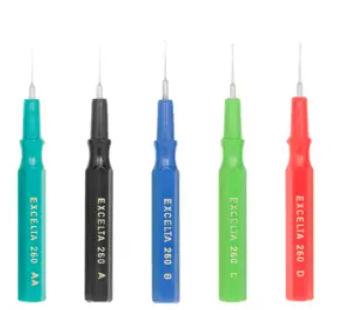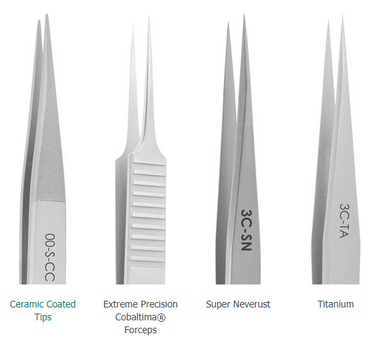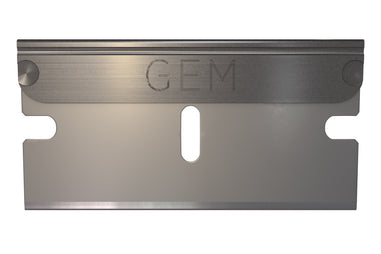- No products in the cart.
Because of their extremely small size and fragile nature, biological micro objects are exceptionally challenging to work with, even under the controlled conditions of the laboratory. Every laboratory technician has a story about a time when they were trying to handle a biological micro object and experienced disaster as a result of a shaky hand or an uncooperative sample.
For laboratories which plan on spending a lot of time manipulating very small biological objects, picking the best pair of tweezers for the job will save a tremendous amount of time and avert a handful of headaches for lab personnel. To determine which features make for a great set of tweezers for handling biological micro objects, it’s necessary to investigate why biological micro objects are so uniquely difficult to manipulate in the lab
What Makes Biological Micro-Objects Difficult to Handle?
Biological micro-objects have a few properties which make them problematic for laboratory
personnel to manipulate. These properties include:
-
Smallness
-
Slipperiness
-
Fragility
-
Attracting to other objects via static electricity
Each of these properties poses a unique set of challenges, only some of which can be addressed by tweezer choice. Specifically, the small size of micro objects makes them difficult to manipulate because the tweezer prongs can sometimes block the operator’s view.
To address this issue, many tweezers have angled prongs, allowing the operator to keep their hand and the rear grip of the tweezer out of sight so that they can manipulate the object more precisely. Line of sight isn’t the only issue stemming from the size of biological micro objects, however.

Some types of surfaces are poorly optimized for handling micro objects. This is especially true of tweezers that have pointed-tip prongs. The small points of the prongs may be an asset during electronics assembly, but in the context of picking up a biological object, it may be that the prongs are too small to do much more than move the object around on the lab bench. While many of the challenges associated with small size can be offset by using a microscope and the correct type of tweezer, it’s still difficult for an operator’s fine motor control to carry the day 100% of the time.
Biological objects are also frequently very slippery, emphasizing the importance of using a tweezer with gripping hashes on the interior prong surfaces. Pointed-tip tweezer prongs and cutting-tip prongs typically do not have gripping hashes on the interior sides of the prongs, meaning that micro objects are highly likely to be fumbled if they are picked up, especially if they are wet, as many biological objects tend to be. For some biological objects, being fumbled is a major problem as a result of their fragility.
Especially for biological objects which are desiccated, being dropped on the lab bench during manipulation by a pair of tweezers can spell destruction. This is doubly true for condensed and desiccated plant matter, which often shatters when dropped from a relatively small height. Successfully manipulating these types of biological micro objects in the lab requires a gentle touch from the operator—but also a steady hand. Tweezer prong surfaces which are wide rather than thin can apply mechanical force evenly to the object, reducing the chances of it being punctured by too much force being applied to a single point by a sharp tweezer prong.
Some biological micro objects are also prone to attraction via static electricity. This means that they may be attracted to the tips of the operator’s tweezers, or, more worryingly, to the tips of their fingers. Typically, static attraction is a larger concern for dessicated objects which are being manipulated in an environment with very low ambient humidity—like most laboratories.
While there isn’t any single solution to this issue, some labs can successfully increase the level of ambient humidity by boiling water and releasing the hot vapor near the work area. For labs which can’t use this trick because it will damage the experiment or the micro object, discharging the static from their working pair of tweezers by touching it to a grounded metal surface is frequently an effective alternative.
What To Look For When Purchasing Micro Tweezers
In light of the above, there are several features which make for an effective pair of tweezers intended for manipulating biological micro-objects. For the most effective tweezing, identify the tweezers which have:
-
Flat prongs
-
Angled prongs
-
Traction hashing on the prong surfaces
Tweezers with flat prongs that also have traction hashing are preferable for manipulating biological micro objects because they allow the operator to hold onto the object more tightly without exerting too much pressure on any single point. So long as the prongs don’t get in the way of the operator’s view underneath the microscope, they’ll be able to pick up delicate objects like desiccated and compacted plant matter without perturbing the object’s structure.
While flat prongs and traction hashing alone are significantly better for manipulating biological micro objects than pointed-tip tweezers, they may still block the user’s view of the object under certain circumstances, and the lack of an angled set of prongs can make prolonged period of work to be quite uncomfortable.
As a result, tweezers with angled tweezer prongs and flat surfaces are the ideal type of tweezer for picking up biological micro objects. Rather than getting in the way of the user’s vision and causing them to contort their wrist for extended periods, angled prong tweezers keep the field of view clear and the user’s wrist at a comfortable neutral state while manipulating the object. Additional user comfort will also lead to fewer accidents of fine motor control during manipulations, reducing the headaches associated with unintentional damage to the sample due to mishandling.
Laboratories that anticipate an abundance of work dealing with biological micro objects will benefit from working with an experienced supplier who can help them to find the perfect set of tweezers for their lab. When labs work with a supplier with expertise in their field, addressing issues like the graceful manipulation of biological micro objects isn’t as daunting as it would be otherwise.
For over 40 years, Lab Pro has been to committed to providing critical laboratory supplies like micro tweezers in California. Come visit the biggest Lab Supply showroom in California, or contact us online or at 888-452-2776.












































